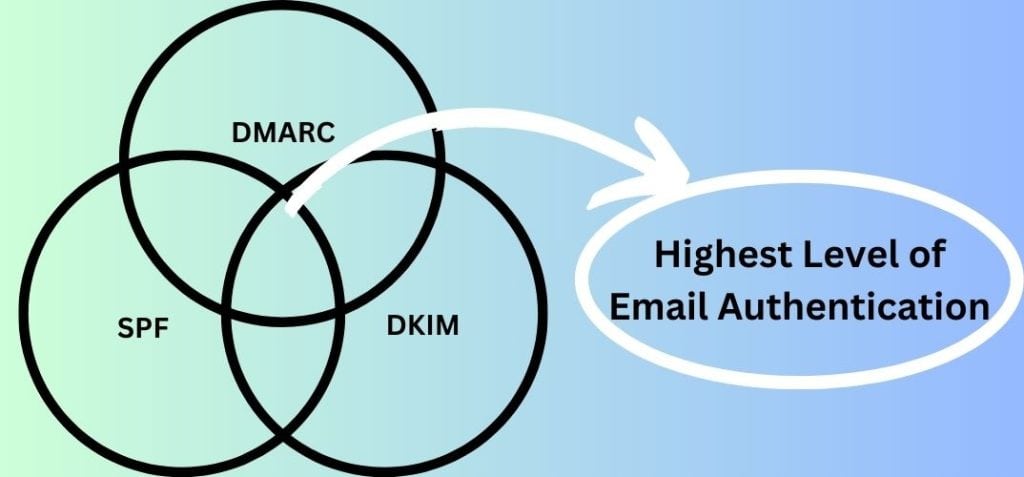In today’s digital age, email has become an essential marketing tool that can make or break your business.
Marketing emails are one of the most valuable and cost-effective tools in modern marketing. When used in the right manner, they will help businesses reach their potential, nurture client relationships, drive sales, and gather insights into what’s in the customer’s mind.
At the same time, people are now fed up with all the useless emails they get. But the good news is email providers are now efficient in sending useless junk emails to the spam folder. Sometimes, important emails can also land in the spam folder and that can be frustrating for the sender.
Contrary to popular belief, the reasons for emails going to the spam folder are not entirely out of our control. Both controllable and uncontrollable factors trigger spam filters.
In this blog, we’ll dive into the reasons and factors why emails end up in the spam folder and provide you with tips to prevent it from happening to your emails.
Why Do Emails Go to Spam?
Emails go to the spam folder for several reasons and some of these include lower engagement, sender reputation, content-related issues, and email deliverability issues.
1. Sender Reputation
One of the most critical factors determining whether an email ends up in the spam folder is the sender’s reputation. Email service providers, like Gmail, Yahoo, and Outlook, use complex algorithms to assess the trustworthiness of senders. If your sender’s reputation is poor, your emails are more likely to be flagged as spam.
Ways to Deal With It:
- Maintain a good sender reputation by sending high-quality content, avoiding spammy language, and respecting email marketing best practices.
- Monitor your sender score using tools like Senderscore.org or Sender Score by Validity.
2. Content and Spam Triggers
The content of your email matters greatly. Certain keywords and elements in your email can trigger spam filters. These include excessive use of capital letters, too many exclamation marks, and certain words commonly associated with spam.
Ways to Deal With It:
- Craft your email content carefully, avoiding spammy language and tactics.
- Use spam checkers like SpamAssassin or Email on Acid to assess your email content for potential issues.
3. Poor Email Authentication
Email authentication methods like SPF, DKIM, and DMARC help recipients verify the authenticity of the sender.
SPF( Sender Policy Framework) is an email authentication method used to prevent email spoofing by helping email ISPs( Internet Service Providers) to identify mail servers that are allowed to send email for a given domain. With this email authentication, companies and brands can ensure their domain is not being used by spoofers, scammers, and phishers to send malicious emails.
DKIM( DomainKeys Identified Mail) uses the DKIM signature and encryption process to ensure the integrity of the email sent, if someone tampers with the email then the DKIM signature will fail the validation procedure.
DMARC( Domain-based Message Authentication Reporting and Conformance) provides a mechanism for email senders to give guidelines for email recipients on how to handle inbound email that has failed the sender’s email validation processes.

SPF and DKIM help in validating the email, it ensures that the email sender is genuine and the email came from the sender itself. And DMARC, guides the recipient through what needs to be if they received an unauthenticated email.
Without proper authentication, your emails are more likely to be treated with suspicion.
Ways to Deal With It:
- Ensure you have your domain’s SPF, DKIM, and DMARC records correctly configured.
- Regularly check the authentication status of your emails using online tools or email authentication services.
4. High Complaint Rates
If recipients frequently mark your emails as spam or unsubscribe from your mailing list, it negatively impacts your sender’s reputation. This can happen due to various reasons, the recipient may have forgotten they have opted to receive your emails or they find your emails a waste of time.
Ways to Deal With It:
- Send emails only to those who have opted in.
- Make unsubscribing easy and clear in your emails.
- Ensure the emails are interesting and informative to the recipients.
- Encourage recipients to move emails from the spam folder to their inbox if they find them there.
5. Sending Bulk Emails
Sending mass emails can raise red flags for spam filters, especially if you’re not following best practices for bulk emailing.
This has a lot of perks including helping you obtain a wider reach in a short span of time in the most economical way possible, but it also increases the chances of your email ending up in the spam folder. This will result in lower open rates and click-throughs and it will also damage your sender’s reputation and reduce your brand credibility.
Bulk emails are not for all your email marketing campaigns, they should be implemented strategically during specific occasions and to announce big changes.
Ways to Deal With It:
- Use reputable email marketing services like SendGrid that help manage and optimize bulk email campaigns.
- Segment your email list to send relevant content to specific groups.
What Can You Do to Prevent Your Emails from Going to Spam?
1. Follow Email Marketing Best Practices
Adhering to best practices is essential for maintaining a good sender reputation.
This includes sending emails only to those who have opted in, providing valuable and relevant content, and ensuring that your email list is clean and up to date.
2. Authenticate Your Emails
Implement SPF, DKIM, and DMARC records to ensure your emails are authenticated and can be trusted by email service providers.
3. Monitor Your Sender Reputation
Regularly check your sender score and reputation using online tools and services. This helps you identify and address issues before they impact your email deliverability.
4. Avoid Spammy Content
Craft your emails carefully, avoiding spam triggers and keeping the content relevant to your recipients. Use spam checkers like mailmeteor to scan your emails before sending them.
5. Partner With a Reliable Email Hosting Provider
Email hosting plays a crucial role in preventing your emails from ending up in spam folders. It does this by verifying the legitimacy of your emails, offering dedicated IP addresses, managing IP reputations, filtering content to avoid common spam triggers, helping you maintain clean email lists, setting reasonable email sending rates, providing tools for monitoring, establishing feedback loops with major email providers, ensuring compliance with email regulations, and implementing security measures to deter spam.
6. Test Your Emails
Before launching a large email campaign, send test emails to yourself and a few colleagues to check how they are displayed and whether they land in spam. Adjust as needed before the final send.
Better Email Campaigns From Now!
Understanding why emails go to spam and taking proactive steps to prevent it can save you from the frustration of important messages going unnoticed.
By following best practices, maintaining a good sender reputation, and using authentication methods, you can increase the chances of your emails reaching the inbox where they belong.
Email deliverability is a crucial aspect of successful communication in the digital age, so don’t let your messages get lost in the spam folder.
